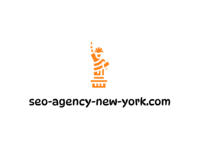
|
IN BRIEF
|
In today’s digital landscape, an effective content strategy is crucial for businesses aiming to captivate their audience and achieve their goals. By understanding the essentials of a successful approach, companies can align their messaging with the needs and interests of their target audience. Key components include crafting content that is searchable, readable, understandable, actionable, and shareable. Emphasizing these elements lays the groundwork for not only building authority but also transforming visitors into loyal customers.

The Key Elements of an Effective Content Strategy
Crafting a successful content strategy requires a deep understanding of both the target audience and the business objectives. It is essential to identify what the audience is looking for and how the content can address those needs while also aligning with the organization’s goals. For instance, a company aiming to increase brand awareness should focus on producing valuable and shareable content that resonates with its audience. This involves conducting thorough audience research to build comprehensive profiles that guide content creation, ensuring it is relevant and engaging.
Moreover, a robust content strategy must ensure that all content is searchable, readable, understandable, actionable, and shareable. Establishing clear metrics to measure success is vital; this might include tracking engagement rates or website traffic. For instance, if a blog post receives high engagement, it indicates that the content is resonating with readers, prompting further exploration of similar topics. Additionally, implementing a plan to repurpose content can extend its lifespan while maximizing reach. By focusing on these elements, businesses can create a strategic approach that not only builds authority but also attracts and retains customers effectively.

Essentials of a Successful Content Strategy
A well-structured content strategy is fundamentally about aligning the interests of your target audience with your business’s objectives. To achieve this alignment, businesses must become adept at understanding the needs and preferences of their audience. For instance, consider a brand that sells eco-friendly products. By analyzing customer feedback and purchasing behavior, they could identify key trends such as the growing interest in sustainable living. Therefore, a focused content strategy might include blog posts that educate readers about sustainability, videos showcasing eco-friendly product usage, and engaging social media campaigns that highlight customer stories. This data-driven approach not only appeals to the audience’s interests but also supports the brand’s overarching goals, thereby creating a mutually beneficial relationship.
Moreover, it is crucial to ensure that content is searchable, readable, understandable, actionable, and shareable. Each element plays a pivotal role in establishing a solid foundation for your strategy. For example, optimizing your articles for search engines through the right keywords can significantly enhance visibility. Understanding the importance of quality content in digital marketing is another aspect that cannot be overlooked; quality content not only attracts more traffic but keeps visitors engaged, leading to higher conversion rates. To further amplify your reach, you might want to explore effective strategies for successful content promotion that can propel your content to new audiences.
Incorporating visuals is another vital contributor to a successful strategy; studies show that content with relevant images gets 94% more views than content without images. Utilizing innovative visuals not only captures attention but also aids in conveying complex information more effectively. Outside the norms, adopting long-tail keywords may enhance SEO efforts and draw in a more targeted audience. For further insights on optimizing your content strategy for better online visibility, understanding the importance of SERP in digital marketing is indispensable.
The Building Blocks of an Effective Content Strategy
Understanding Your Audience
A successful content strategy begins with a deep understanding of the target audience. This involves not just knowing demographics, but really grasping their needs, interests, and pain points. For instance, by identifying what questions your audience is asking online, you can tailor your content to answer those queries. Tools such as Google Analytics and social listening platforms can offer insights into audience behavior, helping you develop content that resonates.
Incorporating data-driven decisions enhances your strategy. A/B testing different formats or topics can reveal what truly engages your readers, leading to improved content performance. For example, blogs that provide practical solutions often gain more traffic and shares.
- Specific Goals: Clearly define what you aim to achieve with your content.
- Measurable Outcomes: Establish key performance indicators (KPIs) to track content success.
- Engagement Tactics: Utilize innovative visuals and interactive elements to captivate your audience.
- SEO Optimization: Incorporate strategies such as focusing on long-tail keywords to improve visibility.
The success of your strategy hinges on continually testing and refining your approach. Staying updated with SEO trends and audience preferences is essential for remaining relevant in a constantly evolving digital landscape.
To learn more about the essential elements of a powerful content strategy, check out this resource.

The Core Principles of an Effective Content Strategy
Building a successful content strategy requires a deep understanding of the target audience’s needs and interests, aligned with the overarching goals of the business. An effective approach begins with clearly defined objectives, ensuring each piece of content is not only insightful but also actionable.
A well-rounded content strategy incorporates five essential components: it should be searchable, readable, understandable, actionable, and shareable. These elements create a robust foundation that fosters engagement and drives results.
To enhance authority and attract new customers, it is vital to follow proven steps. Key considerations include understanding the content marketing funnel, treating your content as valuable data, developing a comprehensive plan, repurposing existing material, and establishing a specific strategic direction.
Whether setting specific or measurable goals, a successful strategy integrates a clear mission statement with realistic metrics for success. Grasping the fundamental needs of the audience through thorough research will enable the development of a compelling narrative that resonates and builds trust.
Equally important are the ethical practices surrounding content curation and creation, alongside the implementation of innovative visuals, which collectively enhance engagement. By prioritizing these aspects, businesses can significantly improve their online visibility and connect meaningfully with their audience.

A successful content strategy hinges on a thorough understanding of your target audience. Identifying their needs and interests is crucial, as it allows brands to craft content that resonates and engages. Additionally, setting specific and measurable goals is imperative. This not only provides a clear direction but also helps in tracking progress and success.
Moreover, it’s essential to ensure that all content is searchable, readable, and actionable. These elements build a solid foundation for driving engagement and achieving desired outcomes. Integrating a plan that leverages the power of repurposing content can also enhance efficiency and reach across different platforms.
Ultimately, the effectiveness of a content strategy lies in its ability to build authority and attract new customers. By aligning content with business goals and audience needs, brands can cultivate a compelling online presence that fosters growth and engagement.
